 |
Matronics Email Lists
Web Forum Interface to the Matronics Email Lists
|
| View previous topic :: View next topic |
| Author |
Message |
Steve Kelly
Joined: 08 Jul 2016
Posts: 18
|
 Posted: Wed Mar 13, 2019 7:00 am Post subject: Starters Posted: Wed Mar 13, 2019 7:00 am Post subject: Starters |
 |
|
Can someone with more knowledge than me on the subject, tell me the difference between a series wound motor and a PM motor. Also, does the series wound have more torque. Is it more durable.
I have a Skytech PM on my O-320 thats getting a little sluggish on the initial turn of the prop. While I'm aware that there may be other causes, confidence that my engine will start reliably is important.
I have heard good things about B&Cs starters. While they're more expensive, I guess you get what you pay for.
Steve
| | - The Matronics AeroElectric-List Email Forum - | | | Use the List Feature Navigator to browse the many List utilities available such as the Email Subscriptions page, Archive Search & Download, 7-Day Browse, Chat, FAQ, Photoshare, and much more:
http://www.matronics.com/Navigator?AeroElectric-List |
|
_________________
Steve |
|
| Back to top |
|
 |
nuckolls.bob(at)aeroelect
Guest
|
 Posted: Fri Mar 15, 2019 4:20 am Post subject: Starters Posted: Fri Mar 15, 2019 4:20 am Post subject: Starters |
 |
|
At 10:00 AM 3/13/2019, you wrote:
| Quote: | --> AeroElectric-List message posted by: "Steve Kelly" <amsk22(at)gmail.com>
Can someone with more knowledge than me on the subject, tell me the difference
between a series wound motor and a PM motor. |
That's a question with a really big answer.
It fills a couple of volumes. It all depends
on the application. Series wound motors for
engine cranking are falling in popularity
for a host of interleaved trade-offs. Strong
influences on the shift to PM motors include
falling costs of rare earth magnets compared
to higher manufacturing costs for wound fields.
Wound field motors seem to find favor with
OEMs for diesel engines . . . a wound field
motor has a flatter speed torque curve
than PM motors under heavy load. They
generally outperform PM starters under
adverse conditions (cold, soggy battery,
high resistance in cranking loop).
[img]cid:.0[/img]
The downside of series wound motors include
poor load-speed regulation; an unloaded
PM motor has a limit on unloaded RPM.
A series wound motor's unloaded speed
is limited only by friction in the motor's
construction. Some designs are at risk
for self destruction if operated no-load.
There are a dozen trade-offs for deciding
which configuration to adopt for any given
application. Neither configuration is
'superior' to the other over the full
spectrum of operating characteristics.
| Quote: | | Also, does the series wound have more torque. |
Not 'more' but 'flatter' speed-torque
characteristics under heavy load . . .
| Quote: | | Is it more durable |
Not necessarily. Durability has more to
do with design details and manufacturing
quality than with choice of motors.
| Quote: |
I have a Skytech PM on my O-320 thats getting a
little sluggish on the initial turn of the prop.
While I'm aware that there may be other causes,
confidence that my engine will start reliably is important. |
Motor condition is but one of several reasons
for sluggish performance. The weakest link
in cranking chain is battery condition.
Just for grins, jumper your car battery
to the ship's battery and see how the engine
cranks. If there is marked improvement,
consider load/capacity checking your battery.
A least likely reason for diminished
performance is an increased voltage
drop in cranking power loop.
[img]cid:.1[/img]
It's expected that voltage available at the starter
motor is lower than battery voltage. Just how much
lower has an effect on cranking speed. I'd carefully
check out the cranking power loop, ESPECIALLY the
battery, before swapping out the starter.
| Quote: | | I have heard good things about B&Cs starters. While they're more expensive, I guess you get what you pay for. |
There were a number of discussions about the
differences for B&C versus other players
circa 1996. Here's one thread
https://tinyurl.com/y38w4ksz
In 23 years since, the various players
have had ample opportunity to secure their
position in the market based on perceived
value and demonstrated track record. Further,
I'm certain that many of the points cited
in the thread are not longer valid . . .
companies have changed hands and
sales volumes have promoted better
manufacturing techniques.
I have no recent knowledge of player
performance in today's starter market.
But I can share that Robinson Helicopter
was quite pleased with the performance
and weight advantages of the B&C
starters. They would swap B&C starters
onto brand new engines fitted with
factory supplied starters.
B&C would receive boxes of Robinson
starters pulled off engines taken
down for overhaul and returned for reman. No
matter how beat up and dirty the starters
were on the outside, the wearing parts
inside looked like they could go another
2,000 hours on the airplane.
I have no foundation to assert that
the major players do not offer good
value . . . but yes, in a free-market
competition for customers, you generally
do get what you pay for.
Bob . . .
| | - The Matronics AeroElectric-List Email Forum - | | | Use the List Feature Navigator to browse the many List utilities available such as the Email Subscriptions page, Archive Search & Download, 7-Day Browse, Chat, FAQ, Photoshare, and much more:
http://www.matronics.com/Navigator?AeroElectric-List |
|
| Description: |
|
| Filesize: |
25 KB |
| Viewed: |
7147 Time(s) |

|
| Description: |
|
| Filesize: |
129.21 KB |
| Viewed: |
7147 Time(s) |
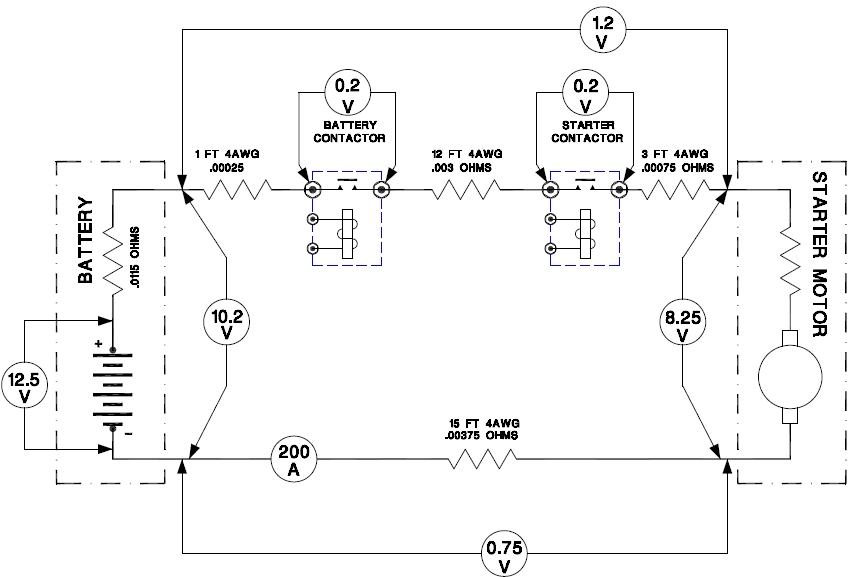
|
|
|
| Back to top |
|
 |
Steve Kelly
Joined: 08 Jul 2016
Posts: 18
|
 Posted: Fri Mar 15, 2019 9:21 am Post subject: Starters Posted: Fri Mar 15, 2019 9:21 am Post subject: Starters |
 |
|
Bob, Thank you for the reply. I will try to get out to the hanger early next week and check the voltage readings. The battery is a PC680 at three months old.  Do you have a method you would suggest to do a load/capacity check on it.Steve
On Fri, Mar 15, 2019 at 8:27 AM Robert L. Nuckolls, III <nuckolls.bob(at)aeroelectric.com (nuckolls.bob(at)aeroelectric.com)> wrote:
| Quote: | At 10:00 AM 3/13/2019, you wrote:
| Quote: | --> AeroElectric-List message posted by: "Steve Kelly" <amsk22(at)gmail.com (amsk22(at)gmail.com)>
Can someone with more knowledge than me on the subject, tell me the difference
between a series wound motor and a PM motor. |
 That's a question with a really big answer.
 It fills a couple of volumes. It all depends
 on the application. Series wound motors for
 engine cranking are falling in popularity
 for a host of interleaved trade-offs. Strong
 influences on the shift to PM motors include
 falling costs of rare earth magnets compared
 to higher manufacturing costs for wound fields.
 Wound field motors seem to find favor with
 OEMs for diesel engines . . . a wound field
 motor has a flatter speed torque curve
 than PM motors under heavy load. They
 generally outperform PM starters under
 adverse conditions (cold, soggy battery,
 high resistance in cranking loop).
[img]cid:16982567f58a8583ca21[/img]
 The downside of series wound motors include
 poor load-speed regulation; an unloaded
 PM motor has a limit on unloaded RPM.
 A series wound motor's unloaded speed
 is limited only by friction in the motor's
 construction. Some designs are at risk
 for self destruction if operated no-load.
 There are a dozen trade-offs for deciding
 which configuration to adopt for any given
 application. Neither configuration is
 'superior' to the other over the full
 spectrum of operating characteristics.
| Quote: | | Â Also, does the series wound have more torque. |
 Not 'more' but 'flatter' speed-torque
 characteristics under heavy load . . .
| Quote: | | Â Is it more durable |
 Not necessarily. Durability has more to
 do with design details and manufacturing
 quality than with choice of motors.
| Quote: | Â
 I have a Skytech PM on my O-320 thats getting a
little sluggish on the initial turn of the prop.
While I'm aware that there may be other causes,
confidence that my engine will start reliably is important. |
 Motor condition is but one of several reasons
 for sluggish performance. The weakest link
 in cranking chain is battery condition.
 Just for grins, jumper your car battery
 to the ship's battery and see how the engine
 cranks. If there is marked improvement,
 consider load/capacity checking your battery.
 A least likely reason for diminished
 performance is an increased voltage
 drop in cranking power loop.
[img]cid:16982567f58aa0d15412[/img]
 It's expected that voltage available at the starter
 motor is lower than battery voltage. Just how much
 lower has an effect on cranking speed. I'd carefully
 check out the cranking power loop, ESPECIALLY the
 battery, before swapping out the starter.
| Quote: | |  I have heard good things about B&Cs starters. While they're more expensive, I guess you get what you pay for. |
 There were a number of discussions about the
 differences for B&C versus other players
 circa 1996. Here's one thread
https://tinyurl.com/y38w4ksz
 In 23 years since, the various players
 have had ample opportunity to secure their
 position in the market based on perceived
 value and demonstrated track record. Further,
 I'm certain that many of the points cited
 in the thread are not longer valid . . .
 companies have changed hands and
 sales volumes have promoted better
 manufacturing techniques.
 I have no recent knowledge of player
 performance in today's starter market.
 But I can share that Robinson Helicopter
 was quite pleased with the performance
 and weight advantages of the B&C
 starters. They would swap B&C starters
 onto brand new engines fitted with
 factory supplied starters.
 B&C would receive boxes of Robinson
 starters pulled off engines taken
 down for overhaul and returned for reman. No
 matter how beat up and dirty the starters
 were on the outside, the wearing parts
 inside looked like they could go another
 2,000 hours on the airplane.
 I have no foundation to assert that
 the major players do not offer good
 value . . . but yes, in a free-market
 competition for customers, you generally
 do get what you pay for.
Â
Â
 Bob . . .
|
| | - The Matronics AeroElectric-List Email Forum - | | | Use the List Feature Navigator to browse the many List utilities available such as the Email Subscriptions page, Archive Search & Download, 7-Day Browse, Chat, FAQ, Photoshare, and much more:
http://www.matronics.com/Navigator?AeroElectric-List |
|
| Description: |
|
| Filesize: |
25 KB |
| Viewed: |
7144 Time(s) |
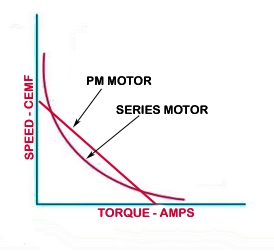
|
| Description: |
|
| Filesize: |
129.21 KB |
| Viewed: |
7144 Time(s) |
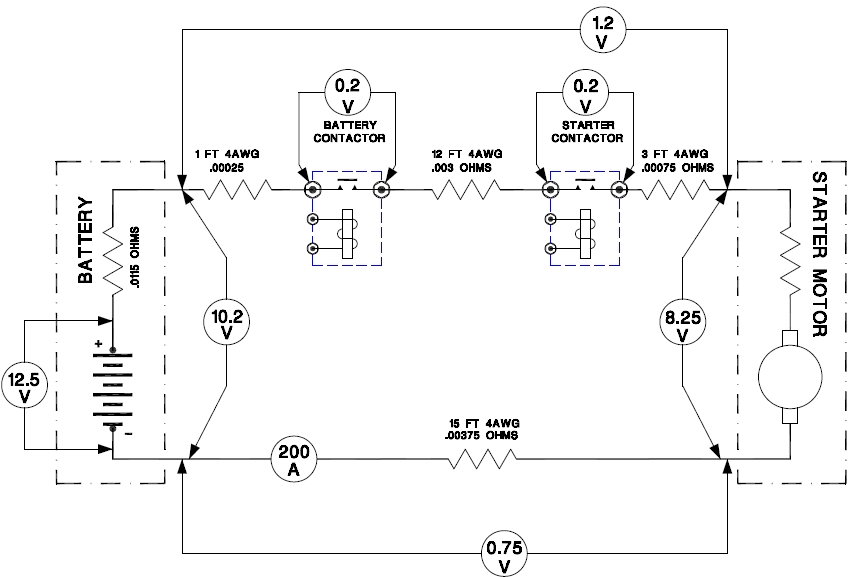
|
_________________
Steve |
|
| Back to top |
|
 |
argoldman(at)aol.com
Guest
|
 Posted: Fri Mar 15, 2019 9:55 am Post subject: Starters Posted: Fri Mar 15, 2019 9:55 am Post subject: Starters |
 |
|
While you are checking...check all of the cable connections for security and corrosionRich
Sent from my iPhone
On Mar 15, 2019, at 12:18 PM, Steve Kelly <amsk22(at)gmail.com (amsk22(at)gmail.com)> wrote:
| Quote: | Bob, Thank you for the reply. I will try to get out to the hanger early next week and check the voltage readings. The battery is a PC680 at three months old. Do you have a method you would suggest to do a load/capacity check on it.Steve
On Fri, Mar 15, 2019 at 8:27 AM Robert L. Nuckolls, III <nuckolls.bob(at)aeroelectric.com (nuckolls.bob(at)aeroelectric.com)> wrote:
| Quote: | At 10:00 AM 3/13/2019, you wrote:
| Quote: | --> AeroElectric-List message posted by: "Steve Kelly" <amsk22(at)gmail.com (amsk22(at)gmail.com)>
Can someone with more knowledge than me on the subject, tell me the difference
between a series wound motor and a PM motor. |
That's a question with a really big answer.
It fills a couple of volumes. It all depends
on the application. Series wound motors for
engine cranking are falling in popularity
for a host of interleaved trade-offs. Strong
influences on the shift to PM motors include
falling costs of rare earth magnets compared
to higher manufacturing costs for wound fields.
Wound field motors seem to find favor with
OEMs for diesel engines . . . a wound field
motor has a flatter speed torque curve
than PM motors under heavy load. They
generally outperform PM starters under
adverse conditions (cold, soggy battery,
high resistance in cranking loop).
<b1f680f.jpg>
The downside of series wound motors include
poor load-speed regulation; an unloaded
PM motor has a limit on unloaded RPM.
A series wound motor's unloaded speed
is limited only by friction in the motor's
construction. Some designs are at risk
for self destruction if operated no-load.
There are a dozen trade-offs for deciding
which configuration to adopt for any given
application. Neither configuration is
'superior' to the other over the full
spectrum of operating characteristics.
| Quote: | | Also, does the series wound have more torque. |
Not 'more' but 'flatter' speed-torque
characteristics under heavy load . . .
| Quote: | | Is it more durable |
Not necessarily. Durability has more to
do with design details and manufacturing
quality than with choice of motors.
| Quote: |
I have a Skytech PM on my O-320 thats getting a
little sluggish on the initial turn of the prop.
While I'm aware that there may be other causes,
confidence that my engine will start reliably is important. |
Motor condition is but one of several reasons
for sluggish performance. The weakest link
in cranking chain is battery condition.
Just for grins, jumper your car battery
to the ship's battery and see how the engine
cranks. If there is marked improvement,
consider load/capacity checking your battery.
A least likely reason for diminished
performance is an increased voltage
drop in cranking power loop.
<b1f681f.jpg>
It's expected that voltage available at the starter
motor is lower than battery voltage. Just how much
lower has an effect on cranking speed. I'd carefully
check out the cranking power loop, ESPECIALLY the
battery, before swapping out the starter.
| Quote: | | I have heard good things about B&Cs starters. While they're more expensive, I guess you get what you pay for. |
There were a number of discussions about the
differences for B&C versus other players
circa 1996. Here's one thread
https://tinyurl.com/y38w4ksz
In 23 years since, the various players
have had ample opportunity to secure their
position in the market based on perceived
value and demonstrated track record. Further,
I'm certain that many of the points cited
in the thread are not longer valid . . .
companies have changed hands and
sales volumes have promoted better
manufacturing techniques.
I have no recent knowledge of player
performance in today's starter market.
But I can share that Robinson Helicopter
was quite pleased with the performance
and weight advantages of the B&C
starters. They would swap B&C starters
onto brand new engines fitted with
factory supplied starters.
B&C would receive boxes of Robinson
starters pulled off engines taken
down for overhaul and returned for reman. No
matter how beat up and dirty the starters
were on the outside, the wearing parts
inside looked like they could go another
2,000 hours on the airplane.
I have no foundation to assert that
the major players do not offer good
value . . . but yes, in a free-market
competition for customers, you generally
do get what you pay for.
Bob . . .
|
|
| | - The Matronics AeroElectric-List Email Forum - | | | Use the List Feature Navigator to browse the many List utilities available such as the Email Subscriptions page, Archive Search & Download, 7-Day Browse, Chat, FAQ, Photoshare, and much more:
http://www.matronics.com/Navigator?AeroElectric-List |
|
|
|
| Back to top |
|
 |
cluros(at)gmail.com
Guest
|
 Posted: Fri Mar 15, 2019 11:17 am Post subject: Starters Posted: Fri Mar 15, 2019 11:17 am Post subject: Starters |
 |
|
That is a very common battery, any battery store will test it for you.
On Fri, Mar 15, 2019, 13:31 Steve Kelly <amsk22(at)gmail.com (amsk22(at)gmail.com)> wrote:
| Quote: | Bob, Thank you for the reply. I will try to get out to the hanger early next week and check the voltage readings. The battery is a PC680 at three months old.  Do you have a method you would suggest to do a load/capacity check on it.Steve
On Fri, Mar 15, 2019 at 8:27 AM Robert L. Nuckolls, III <nuckolls.bob(at)aeroelectric.com (nuckolls.bob(at)aeroelectric.com)> wrote:
| Quote: | At 10:00 AM 3/13/2019, you wrote:
| Quote: | --> AeroElectric-List message posted by: "Steve Kelly" <amsk22(at)gmail.com (amsk22(at)gmail.com)>
Can someone with more knowledge than me on the subject, tell me the difference
between a series wound motor and a PM motor. |
 That's a question with a really big answer.
 It fills a couple of volumes. It all depends
 on the application. Series wound motors for
 engine cranking are falling in popularity
 for a host of interleaved trade-offs. Strong
 influences on the shift to PM motors include
 falling costs of rare earth magnets compared
 to higher manufacturing costs for wound fields.
 Wound field motors seem to find favor with
 OEMs for diesel engines . . . a wound field
 motor has a flatter speed torque curve
 than PM motors under heavy load. They
 generally outperform PM starters under
 adverse conditions (cold, soggy battery,
 high resistance in cranking loop).
[img]cid:16982567f58a8583ca21[/img]
 The downside of series wound motors include
 poor load-speed regulation; an unloaded
 PM motor has a limit on unloaded RPM.
 A series wound motor's unloaded speed
 is limited only by friction in the motor's
 construction. Some designs are at risk
 for self destruction if operated no-load.
 There are a dozen trade-offs for deciding
 which configuration to adopt for any given
 application. Neither configuration is
 'superior' to the other over the full
 spectrum of operating characteristics.
| Quote: | | Â Also, does the series wound have more torque. |
 Not 'more' but 'flatter' speed-torque
 characteristics under heavy load . . .
| Quote: | | Â Is it more durable |
 Not necessarily. Durability has more to
 do with design details and manufacturing
 quality than with choice of motors.
| Quote: | Â
 I have a Skytech PM on my O-320 thats getting a
little sluggish on the initial turn of the prop.
While I'm aware that there may be other causes,
confidence that my engine will start reliably is important. |
 Motor condition is but one of several reasons
 for sluggish performance. The weakest link
 in cranking chain is battery condition.
 Just for grins, jumper your car battery
 to the ship's battery and see how the engine
 cranks. If there is marked improvement,
 consider load/capacity checking your battery.
 A least likely reason for diminished
 performance is an increased voltage
 drop in cranking power loop.
[img]cid:16982567f58aa0d15412[/img]
 It's expected that voltage available at the starter
 motor is lower than battery voltage. Just how much
 lower has an effect on cranking speed. I'd carefully
 check out the cranking power loop, ESPECIALLY the
 battery, before swapping out the starter.
| Quote: | |  I have heard good things about B&Cs starters. While they're more expensive, I guess you get what you pay for. |
 There were a number of discussions about the
 differences for B&C versus other players
 circa 1996. Here's one thread
https://tinyurl.com/y38w4ksz
 In 23 years since, the various players
 have had ample opportunity to secure their
 position in the market based on perceived
 value and demonstrated track record. Further,
 I'm certain that many of the points cited
 in the thread are not longer valid . . .
 companies have changed hands and
 sales volumes have promoted better
 manufacturing techniques.
 I have no recent knowledge of player
 performance in today's starter market.
 But I can share that Robinson Helicopter
 was quite pleased with the performance
 and weight advantages of the B&C
 starters. They would swap B&C starters
 onto brand new engines fitted with
 factory supplied starters.
 B&C would receive boxes of Robinson
 starters pulled off engines taken
 down for overhaul and returned for reman. No
 matter how beat up and dirty the starters
 were on the outside, the wearing parts
 inside looked like they could go another
 2,000 hours on the airplane.
 I have no foundation to assert that
 the major players do not offer good
 value . . . but yes, in a free-market
 competition for customers, you generally
 do get what you pay for.
Â
Â
 Bob . . .
|
|
| | - The Matronics AeroElectric-List Email Forum - | | | Use the List Feature Navigator to browse the many List utilities available such as the Email Subscriptions page, Archive Search & Download, 7-Day Browse, Chat, FAQ, Photoshare, and much more:
http://www.matronics.com/Navigator?AeroElectric-List |
|
| Description: |
|
| Filesize: |
25 KB |
| Viewed: |
7141 Time(s) |
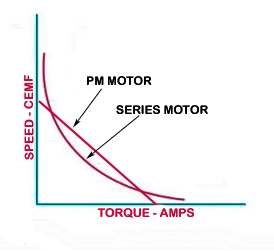
|
| Description: |
|
| Filesize: |
129.21 KB |
| Viewed: |
7141 Time(s) |
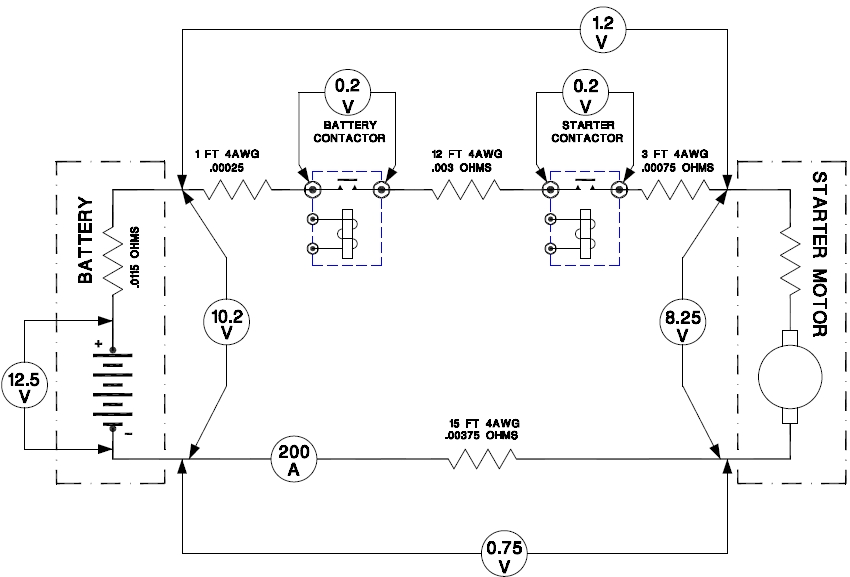
|
|
|
| Back to top |
|
 |
Kellym
Joined: 10 Jan 2006
Posts: 1705
Location: Sun Lakes AZ
|
 Posted: Fri Mar 15, 2019 12:38 pm Post subject: Starters Posted: Fri Mar 15, 2019 12:38 pm Post subject: Starters |
 |
|
Odyssey batteries are often prematurely aged by keeping on a battery
maintainer. If you contact Odyssey they can give you a rejuvenation
protocol to restore the battery to near full capacity. I'm at about 4
years on my Odyssey 925 in the Aridzona heat, and still working fine.
On 3/15/2019 12:15 PM, Sebastien wrote:
| Quote: | That is a very common battery, any battery store will test it for you.
On Fri, Mar 15, 2019, 13:31 Steve Kelly <amsk22(at)gmail.com
<mailto:amsk22(at)gmail.com>> wrote:
Bob, Thank you for the reply. I will try to get out to the hanger
early next week and check the voltage readings. The battery is a
PC680 at three months old.  Do you have a method you would suggest
to do a load/capacity check on it.
Steve
|
| | - The Matronics AeroElectric-List Email Forum - | | | Use the List Feature Navigator to browse the many List utilities available such as the Email Subscriptions page, Archive Search & Download, 7-Day Browse, Chat, FAQ, Photoshare, and much more:
http://www.matronics.com/Navigator?AeroElectric-List |
|
_________________
Kelly McMullen
A&P/IA, EAA Tech Counselor # 5286
KCHD |
|
| Back to top |
|
 |
nuckolls.bob(at)aeroelect
Guest
|
 Posted: Sat Mar 16, 2019 6:06 am Post subject: Starters Posted: Sat Mar 16, 2019 6:06 am Post subject: Starters |
 |
|
At 02:15 PM 3/15/2019, you wrote:
| Quote: | That is a very common battery, any battery store will test it for you.
On Fri, Mar 15, 2019, 13:31 Steve Kelly <amsk22(at)gmail.com (amsk22(at)gmail.com)> wrote:
Bob, Thank you for the reply. I will try to get out to the hanger early next week and check the voltage readings. The battery is a PC680 at three months old.  Do you have a method you would suggest to do a load/capacity check on it. |
That's a pretty fresh battery . . . this suggests
the problem is elsewhere. However, in answer to
your testing questions, I'll suggest that
every owner of an aircraft should also own
something like this
https://tinyurl.com/yag4529y
This LOAD tester allows you to load the battery
to an output of 9 volts while waiting for the
15 second timer light to go out. Note the current
at the end of 15 seconds . . . it should be in
excess of 200A for small engines, 300A for larger
engines. This test confirms the battery's avbility
to grunt the extra-ordinary demands for cranking
the engine.
A CAPACITY test seeks to quantify the battery's
ENERGY content . . . which is entirely separate
from the capability to grunt a cranking load.
There are some rather small batteries that have
demonstrated the ability to crank a turbine
engine
https://tinyurl.com/yye6znqp
But this product wouldn't run the aircraft's
critical systems for very long after the
alternator quits. There are dozens of 'tiny'
products that offer a similar utility
https://tinyurl.com/y2hzkq9l
The way to cap check your battery is to set
up your panel to operate your Plan-B (alternator
out) electrical loads and monitor battery voltage
with a voltmeter. The time it takes to reduce
battery voltage to 10V (the lower limit for
your avionics to operate).
For example, a NEW PC680 has the following
ENERGY delivery capability.
[img]cid:.0[/img]
Assume a 4A endurance load. The curves say you're
good to 3 hours. Here you have to tailor the question
to match your own endurance requirements. If one hour
meets your own Plan-B design goals, then according
to the chart, the new battery is good for about 10A.
Actually, you would want to rate the battery for about
8A given that maintenance protocols suggest replacing
the battery at 75% of new capacity.
Then there's the real-life test . . . turn on the
goodies, start the clock, watch the voltage, measure
the time then recharge the battery. If that time
is equal to or greater than your design goals, then
you're good to fly.
How old is your starter? It MIGHT be that brushes
and/or commutator are worn to the point of producing
degraded performance.
Bob . . .
| | - The Matronics AeroElectric-List Email Forum - | | | Use the List Feature Navigator to browse the many List utilities available such as the Email Subscriptions page, Archive Search & Download, 7-Day Browse, Chat, FAQ, Photoshare, and much more:
http://www.matronics.com/Navigator?AeroElectric-List |
|
| Description: |
|
| Filesize: |
224.52 KB |
| Viewed: |
7132 Time(s) |
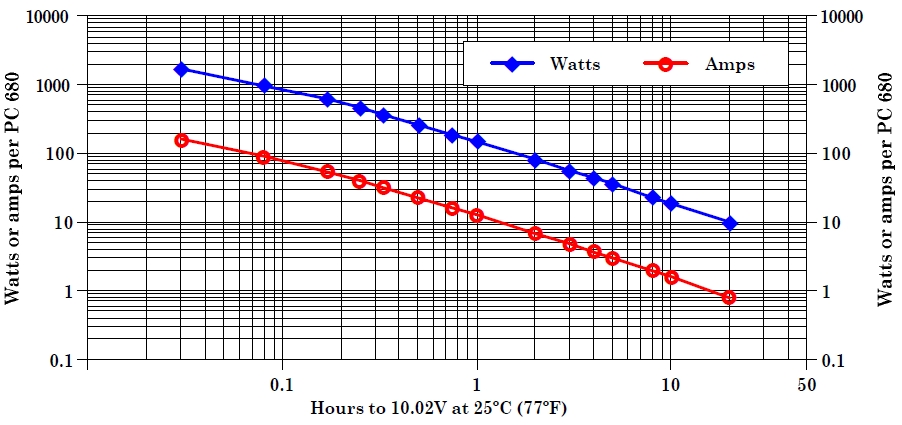
|
|
|
| Back to top |
|
 |
Steve Kelly
Joined: 08 Jul 2016
Posts: 18
|
 Posted: Mon Mar 18, 2019 7:37 am Post subject: Starters Posted: Mon Mar 18, 2019 7:37 am Post subject: Starters |
 |
|
Bob. Thanks for the help. I had a chance to do the voltage tests like you suggested. They were fairly similar to your your're example. While cranking the voltage at the battery was around 10.5 and at the starter it was between 7.5 and 8.5 volts. I also acquired a load tester. At the end of the 15 sec test current was about 330 amps. Battery voltage dropped to 11.3 volts. The starter is a Sky Tec 149xlt. It's about 3 years old and has 170 hours on it. This is probably the smallest starter Sky Tec makes. Not sure if it's the weakest one. Other contributing factors are cooler weather, fresh engine overhaul, and a lightweight prop. Still, the starter should spin it better than it is. Do worn starters draw the battery down faster?
 Also, just to be clear, replacing the battery at 75% refers to the time it takes to drop to 10 volts, correct? In you're example above when the PC680 gets to 10v in 2.25 hours it's time to consider replacement.
 Steve
 Â
Â
On Sat, Mar 16, 2019 at 10:13 AM Robert L. Nuckolls, III <nuckolls.bob(at)aeroelectric.com (nuckolls.bob(at)aeroelectric.com)> wrote:
| Quote: | At 02:15 PM 3/15/2019, you wrote:
| Quote: | That is a very common battery, any battery store will test it for you.
On Fri, Mar 15, 2019, 13:31 Steve Kelly <amsk22(at)gmail.com (amsk22(at)gmail.com)> wrote:
|
Bob,ÃÂ Thank you for the reply.ÃÂ I will try to get out to the hanger early next week and check the voltage readings.ÃÂ The battery is a PC680 at three months old.ÃÂ Ã Do you have a method you would suggest to do a load/capacity check on it.
That's a pretty fresh battery . . . this suggests
the problem is elsewhere. However, in answer to
your testing questions, I'll suggest that
every owner of an aircraft should also own
something like this
https://tinyurl.com/yag4529y
This LOAD tester allows you to load the battery
to an output of 9 volts while waiting for the
15 second timer light to go out. Note the current
at the end of 15 seconds . . . it should be in
excess of 200A for small engines, 300A for larger
engines. This test confirms the battery's avbility
to grunt the extra-ordinary demands for cranking
the engine.
A CAPACITY test seeks to quantify the battery's
ENERGY content . . . which is entirely separate
from the capability to grunt a cranking load.
There are some rather small batteries that have
demonstrated the ability to crank a turbine
engine
https://tinyurl.com/yye6znqp
But this product wouldn't run the aircraft's
critical systems for very long after the
alternator quits. There are dozens of 'tiny'
products that offer a similar utility
https://tinyurl.com/y2hzkq9l
The way to cap check your battery is to set
up your panel to operate your Plan-B (alternator
out) electrical loads and monitor battery voltage
with a voltmeter. The time it takes to reduce
battery voltage to 10V (the lower limit for
your avionics to operate).
For example, a NEW PC680 has the following
ENERGY delivery capability.
[img]cid:169915204ebb1ccea621[/img]
Assume a 4A endurance load. The curves say you're
good to 3 hours. Here you have to tailor the question
to match your own endurance requirements. If one hour
meets your own Plan-B design goals, then according
to the chart, the new battery is good for about 10A.
Actually, you would want to rate the battery for about
8A given that maintenance protocols suggest replacing
the battery at 75% of new capacity.
Then there's the real-life test . . . turn on the
goodies, start the clock, watch the voltage, measure
the time then recharge the battery. If that time
is equal to or greater than your design goals, then
you're good to fly.
How old is your starter? It MIGHT be that brushes
and/or commutator are worn to the point of producing
degraded performance.
 Bob . . .
|
| | - The Matronics AeroElectric-List Email Forum - | | | Use the List Feature Navigator to browse the many List utilities available such as the Email Subscriptions page, Archive Search & Download, 7-Day Browse, Chat, FAQ, Photoshare, and much more:
http://www.matronics.com/Navigator?AeroElectric-List |
|
| Description: |
|
| Filesize: |
224.52 KB |
| Viewed: |
7106 Time(s) |
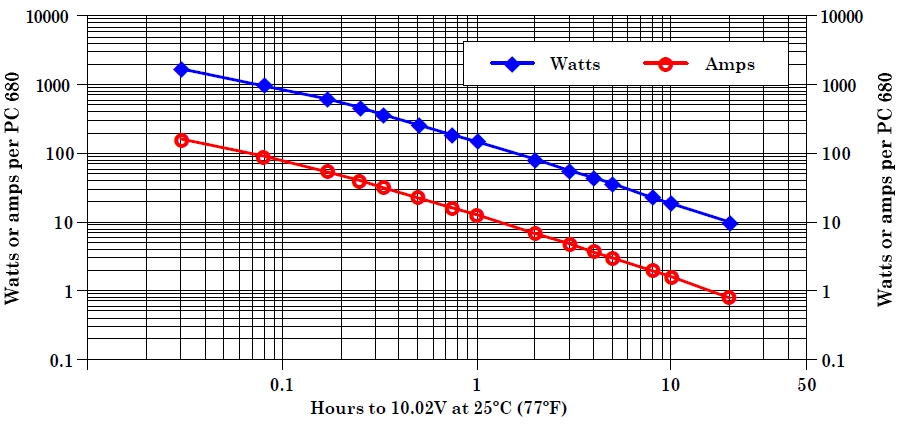
|
_________________
Steve |
|
| Back to top |
|
 |
millner(at)me.com
Guest
|
 Posted: Mon Mar 18, 2019 9:19 am Post subject: Starters Posted: Mon Mar 18, 2019 9:19 am Post subject: Starters |
 |
|
2-3 volts is a huge voltage drop. You need to determine where thatâs happening... SkyTec has a troubleshooting chart to help you find the bad actor
Sent from my iPhone
On Mar 18, 2019, at 8:35 AM, Steve Kelly <amsk22(at)gmail.com (amsk22(at)gmail.com)> wrote:
| Quote: | Bob. Thanks for the help. I had a chance to do the voltage tests like you suggested. They were fairly similar to your your're example. While cranking the voltage at the battery was around 10.5 and at the starter it was between 7.5 and 8.5 volts. I also acquired a load tester. At the end of the 15 sec test current was about 330 amps. Battery voltage dropped to 11.3 volts. The starter is a Sky Tec 149xlt. It's about 3 years old and has 170 hours on it. This is probably the smallest starter Sky Tec makes. Not sure if it's the weakest one. Other contributing factors are cooler weather, fresh engine overhaul, and a lightweight prop. Still, the starter should spin it better than it is. Do worn starters draw the battery down faster?
Also, just to be clear, replacing the battery at 75% refers to the time it takes to drop to 10 volts, correct? In you're example above when the PC680 gets to 10v in 2.25 hours it's time to consider replacement.
Steve
On Sat, Mar 16, 2019 at 10:13 AM Robert L. Nuckolls, III <nuckolls.bob(at)aeroelectric.com (nuckolls.bob(at)aeroelectric.com)> wrote:
| Quote: | At 02:15 PM 3/15/2019, you wrote:
| Quote: | That is a very common battery, any battery store will test it for you.
On Fri, Mar 15, 2019, 13:31 Steve Kelly <amsk22(at)gmail.com (amsk22(at)gmail.com)> wrote:
|
Bob,Ã Thank you for the reply.Ã I will try to get out to the hanger early next week and check the voltage readings.Ã The battery is a PC680 at three months old.Ã Ã Do you have a method you would suggest to do a load/capacity check on it.
That's a pretty fresh battery . . . this suggests
the problem is elsewhere. However, in answer to
your testing questions, I'll suggest that
every owner of an aircraft should also own
something like this
https://tinyurl.com/yag4529y
This LOAD tester allows you to load the battery
to an output of 9 volts while waiting for the
15 second timer light to go out. Note the current
at the end of 15 seconds . . . it should be in
excess of 200A for small engines, 300A for larger
engines. This test confirms the battery's avbility
to grunt the extra-ordinary demands for cranking
the engine.
A CAPACITY test seeks to quantify the battery's
ENERGY content . . . which is entirely separate
from the capability to grunt a cranking load.
There are some rather small batteries that have
demonstrated the ability to crank a turbine
engine
https://tinyurl.com/yye6znqp
But this product wouldn't run the aircraft's
critical systems for very long after the
alternator quits. There are dozens of 'tiny'
products that offer a similar utility
https://tinyurl.com/y2hzkq9l
The way to cap check your battery is to set
up your panel to operate your Plan-B (alternator
out) electrical loads and monitor battery voltage
with a voltmeter. The time it takes to reduce
battery voltage to 10V (the lower limit for
your avionics to operate).
For example, a NEW PC680 has the following
ENERGY delivery capability.
<10a704b8.jpg>
Assume a 4A endurance load. The curves say you're
good to 3 hours. Here you have to tailor the question
to match your own endurance requirements. If one hour
meets your own Plan-B design goals, then according
to the chart, the new battery is good for about 10A.
Actually, you would want to rate the battery for about
8A given that maintenance protocols suggest replacing
the battery at 75% of new capacity.
Then there's the real-life test . . . turn on the
goodies, start the clock, watch the voltage, measure
the time then recharge the battery. If that time
is equal to or greater than your design goals, then
you're good to fly.
How old is your starter? It MIGHT be that brushes
and/or commutator are worn to the point of producing
degraded performance.
Bob . . .
|
|
| | - The Matronics AeroElectric-List Email Forum - | | | Use the List Feature Navigator to browse the many List utilities available such as the Email Subscriptions page, Archive Search & Download, 7-Day Browse, Chat, FAQ, Photoshare, and much more:
http://www.matronics.com/Navigator?AeroElectric-List |
|
|
|
| Back to top |
|
 |
nuckolls.bob(at)aeroelect
Guest
|
 Posted: Mon Mar 18, 2019 9:31 am Post subject: Starters Posted: Mon Mar 18, 2019 9:31 am Post subject: Starters |
 |
|
At 12:09 PM 3/18/2019, you wrote:
| Quote: | 2-3 volts is a huge voltage drop. You need to determine where thatâs happening... SkyTec has a troubleshooting chart to help you find the bad actor
|
Agreed. Use a voltmeter between
(1) battery(+) and starter power terminal
while cranking.
(2) battery(-) and crankcase.
Where is your battery located with respect
to starter i.e. how long are the wires
and what gage are they?
This is a NEW condition . . . used to crank
right smartly and only now sluggish?
Bob . . .
| | - The Matronics AeroElectric-List Email Forum - | | | Use the List Feature Navigator to browse the many List utilities available such as the Email Subscriptions page, Archive Search & Download, 7-Day Browse, Chat, FAQ, Photoshare, and much more:
http://www.matronics.com/Navigator?AeroElectric-List |
|
|
|
| Back to top |
|
 |
Steve Kelly
Joined: 08 Jul 2016
Posts: 18
|
 Posted: Mon Mar 18, 2019 1:51 pm Post subject: Starters Posted: Mon Mar 18, 2019 1:51 pm Post subject: Starters |
 |
|
Bob, The slow prop became more noticeable after rebuilding the engine last summer. Fresh cylinders along with upping the compression ratio from 7 to 8.5. Â
 The battery and solenoids are located on the firewall. So the cables are not very long. Maybe 5' total and 2' for ground. They are B&Cs 4 ga. weld cable.
 Looking at the measurements I made yesterday, the drop on the negative was small, maybe .3 volts. The biggest drop was somewhere between the battery and in side of the starter solenoid.  10.5 volts down to around 8. Didn't check either side of the battery contactor as the battery was getting low. I have a brass strap that connects between the two contactors. 1/2' wide by about 4" long. Do you think this may not be adequate. Either that or the battery contactor. I will check the voltages there when I get back out to the hanger. Â
 Thanks, Steve
On Mon, Mar 18, 2019 at 1:37 PM Robert L. Nuckolls, III <nuckolls.bob(at)aeroelectric.com (nuckolls.bob(at)aeroelectric.com)> wrote:
| Quote: | At 12:09 PM 3/18/2019, you wrote:
| Quote: | 2-3 volts is a huge voltage drop. You need to determine where thatââ¬â¢s happening... SkyTec has a troubleshooting chart to help you find the bad actor
|
 Agreed. Use a voltmeter between
 (1) battery(+) and starter power terminal
     while cranking.
 (2) battery(-) and crankcase.
 Where is your battery located with respect
 to starter i.e. how long are the wires
 and what gage are they?
 This is a NEW condition . . . used to crank
 right smartly and only now sluggish?
 Bob . . .
|
| | - The Matronics AeroElectric-List Email Forum - | | | Use the List Feature Navigator to browse the many List utilities available such as the Email Subscriptions page, Archive Search & Download, 7-Day Browse, Chat, FAQ, Photoshare, and much more:
http://www.matronics.com/Navigator?AeroElectric-List |
|
_________________
Steve |
|
| Back to top |
|
 |
Kellym
Joined: 10 Jan 2006
Posts: 1705
Location: Sun Lakes AZ
|
 Posted: Mon Mar 18, 2019 6:03 pm Post subject: Starters Posted: Mon Mar 18, 2019 6:03 pm Post subject: Starters |
 |
|
Your compression change is not significant in terms of starter cranking.
A PC680 easily cranks an 0-360 with 8.5 compression.
Check to see that each connection is at proper torque at the max end of
scale for bolt size. Check the drop across the solenoid.
Now that you have run the battery down a fair amount, charge it at
around 3 amps until full charge. Should have a resting voltage of 12.9
to 13.0 four or more hours after off charger. If less, may need
rejuvenation through several discharge, charge cycles.
On 3/18/2019 2:49 PM, Steve Kelly wrote:
| Quote: | Bob,
 The slow prop became more noticeable after rebuilding the engine last
summer. Fresh cylinders along with upping the compression ratio from 7
to 8.5.
 The battery and solenoids are located on the firewall. So the cables
are not very long. Maybe 5' total and 2' for ground. They are B&Cs 4
ga. weld cable.
 Looking at the measurements I made yesterday, the drop on the
negative was small, maybe .3 volts. The biggest drop was somewhere
between the battery and in side of the starter solenoid.  10.5 volts
down to around 8. Didn't check either side of the battery contactor as
the battery was getting low. I have a brass strap that connects between
the two contactors. 1/2' wide by about 4" long. Do you think this may
not be adequate. Either that or the battery contactor. I will check
the voltages there when I get back out to the hanger.
 Thanks, Steve
On Mon, Mar 18, 2019 at 1:37 PM Robert L. Nuckolls, III
<nuckolls.bob(at)aeroelectric.com <mailto:nuckolls.bob(at)aeroelectric.com>>
wrote:
At 12:09 PM 3/18/2019, you wrote:
> 2-3 volts is a huge voltage drop. You need to determine where
> thatââ¬â¢s happening... SkyTec has a troubleshooting chart to help
> you find the bad actor
>
 Agreed. Use a voltmeter between
 (1) battery(+) and starter power terminal
     while cranking.
 (2) battery(-) and crankcase.
 Where is your battery located with respect
 to starter i.e. how long are the wires
 and what gage are they?
 This is a NEW condition . . . used to crank
 right smartly and only now sluggish?
__
__ Â Bob . . .
|
| | - The Matronics AeroElectric-List Email Forum - | | | Use the List Feature Navigator to browse the many List utilities available such as the Email Subscriptions page, Archive Search & Download, 7-Day Browse, Chat, FAQ, Photoshare, and much more:
http://www.matronics.com/Navigator?AeroElectric-List |
|
_________________
Kelly McMullen
A&P/IA, EAA Tech Counselor # 5286
KCHD |
|
| Back to top |
|
 |
|
|
You cannot post new topics in this forum
You cannot reply to topics in this forum
You cannot edit your posts in this forum
You cannot delete your posts in this forum
You cannot vote in polls in this forum
You cannot attach files in this forum
You can download files in this forum
|
Powered by phpBB © 2001, 2005 phpBB Group
|










